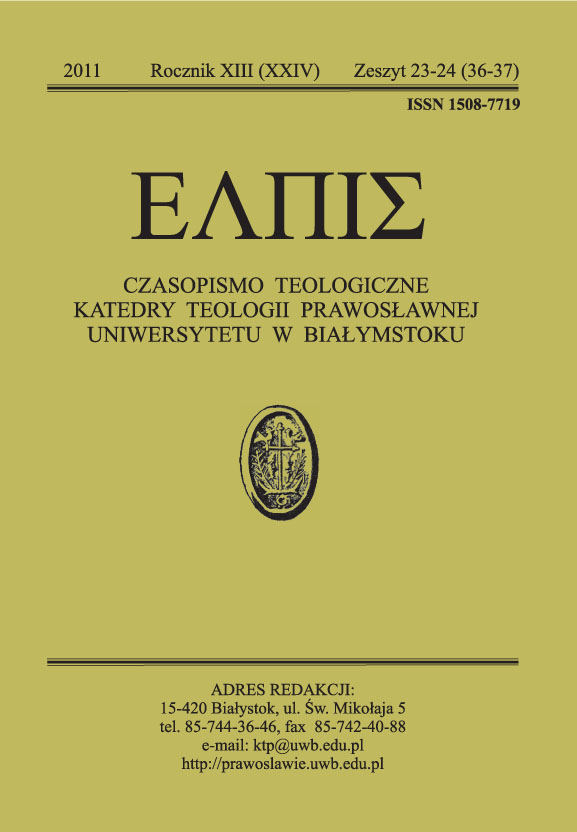Struktura symboliczna architektury świątyni: wprowadzenie do teologii wyrazu sztuki sakralnej
DOI:
https://doi.org/10.15290/elpis.2011.13.06Słowa kluczowe:
architektura, struktura, świątynia, teologia, sztuka sakralna, kopułaAbstrakt
Symbol has always been an intrinsic part of a person. The human being – homo religiosus – is by nature also a homo symbolicus, who thinks and feels symbolically, who lives symbolically. In the domain of sacrum, in the temple, life is realized through holy symbols.
In the past, this was directly reflected in the architecture and in the art of all religions. They have their special compensation in the temple and vice versa; the temple is a concrete manifestation of the function of a symbol. Thanks to them, art could manifest itself, could naturally pass from the level of aesthetics to the level of religion. Nowadays we face a kind of crisis of symbol in the sphere of art, certain reluctance towards symbols. The language of symbols seems to be dying out.
Two thousand years of history of Christianity proved that a main criterion of a value of church architecture was not based on architectural precursors. This architecture was sacred because it was a carrier of a „truth of God” and – like a liturgical mysterion and iconography art – it was a theological comment. It was a codified language of the transposes of religions essences and orders, into the form of architectural expression. This was in a East Christianity and this happens there up to this day.
One of the proofs to confirmate this thesis is an example of dome. It has been in existence since the beginning of forming the traditional architecture structure of the orthodox temple; it manifested symbolical and archetype essence – as an interior space and as an exterior form. In the history of architecture as well as the history of religion it had precisely defined symbolic meanings. They designated its significance in the temple, they gave rise to its long duration in the history, and eventually they gave it a status of an essential element, an everlasting witness of Divine mystery”. Presentation of this essence and orders constructs indispensable context to a value of the contemporary copulas solutions, in the range of preservation the traditional status of copula in the orthodox temple.
In short draft, across calling of form of dome and her hermeneutical partition was tried to appear rule of working of symbolism of sacred arts and her possibilities as special kind of theology of artistic word in architecture.
A person’s life is marked with symbols. There is no lay art and all crises of art are not so much of aesthetic nature as of religious character. They are caused by disappearing symbolism, and, consequently, by debasement of the sense of mystic sacrum.
We need tradition and the canons, we need to be reminded of holy symbols. If the sacral art is to provide an authentic description of teophanic reality and, at the same time, if it is to be a source of all human metaphysical experience and not only intellectual speculation or a mere naturalistic representation of things, we have to find a way of regaining harmony with former symbols.
“Beauty shall save the world” – as Fiodor Dostoyevsky rightly said. In art, redemption is realized by holy symbols. Thanks to them “Mute art is able speak” (St. Gregory of Nyssa).
Downloads
Pobrania
Opublikowane
Jak cytować
Numer
Dział
Licencja
Prawa autorskie (c) 2014 Elpis

Utwór dostępny jest na licencji Creative Commons Uznanie autorstwa – Użycie niekomercyjne – Na tych samych warunkach 4.0 Międzynarodowe.
Szczegółowe warunki licencji CC BY-SA (Uznanie autorstwa - Na tych samych warunkach) dostępne jest na stronie Creative Commons - link.
Autor musi wypełnić i przesłać na adres redakcji (elpis@uwb.edu.pl) uzupełnioną i podpisaną umowę autorską wraz z oświadczeniem o oryginalności artykułu i wkładzie autora w powstanie artykułu. Plik umowy do pobrania: TUTAJ









